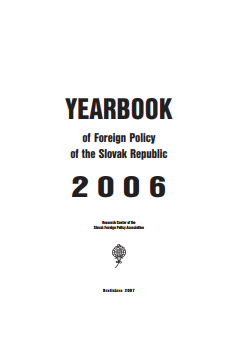
Chronology of the Important Foreign Policy Issues in 2006
Chronology of the Important Foreign Policy Issues in 2006
Keywords: Slovakia; 2006; foreign policy; events; chronology;
More...
Keywords: Slovakia; 2006; foreign policy; events; chronology;
More...![“The Meeting That Will not Happen”. „Na wierzbach… nasze skrzypce” [„There on the Willows we hung our Violins”] by Julian Stryjkowski](/api/image/getbookcoverimage?id=document_cover-page-image_565273.jpg)
Grażyna Maroszczuk’s sketch concerns the migration experience of the writer, whom fateand history sentenced to frequent changes of abode due to political coercion, to the desire to save his life and, in the post-war period, to the cognitive curiosity realizing itself through travel. The experience of encountering the Soviet occupation zone in the East and the American continent in the second half of the 1960s could not remain without consequences for both the subject and for the places, which his imagination was taking possession of. Changes of place turned the writer into a migrant, influenced his way of interpreting reality, showed the complicated issues of identity transformations and auto-identification entanglements inscribed in the story and autobiographical narrative “about encountering” the Other.
More...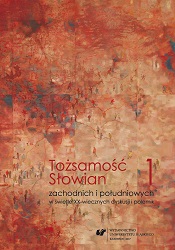
Keywords: literature in exile; language conversion of exiled writers; Piotr Rawicz; Libuše Moníková; Zdenka Becker
The article is devoted to writers who after emigrating decided to change the language in which they wrote their books from their native language to the language of the country which became their second home. The strategies which are described in the article aredetermined by the personal experiences of the writers, for whom the choice of a second language in which their works were to be written became an opportunity to express various attitudes. Piotr Rawicz, a Jew of Polish origin, treated his literary début – the novel Le sang du ciel, written in French – as an autobiography, which was expressed not in a direct manner but in a manner based on intermediation of both the complex narrative devices as well as of language. This enabled him to distance himself from his own experiences. For Libuše Moníková, a writer of Czech origin who writes in German, the thematisation of Czech history and its myths in all the publications which were written in German and published in Germany became a path which enabled a German writer to become a Czech woman. A similar strategy was embraced by Zdenka Becker, a writer of Slovak origin who writes in German, and who in her work engages the painful questions of the Czechoslovakian relations during the period of the deportations of Germans after the Second World War.
More...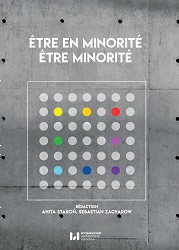
Keywords: anti-homophobia; campaigns; Poland; France; Italy; publicité sociétale; homophobie; Pologne; Italie
The objective of the article is to present as well as compare 21st century anti-homophobia campaigns in Poland, France, and Italy. The information found in the printed press was used as the research material. The author presents legal situations of the LGBT communities in the aforementioned countries and moves on to analyzing lexical and visual means used in the campaigns that attempt to persuade society that the ‘odd’ ones (mostly homosexuals, lesbians, bisexuals, and transsexuals) are deserving of respect and equal treatment. Materials that concerned different forms of legalization of single-sex relationships were not the subject of this analysis.
More...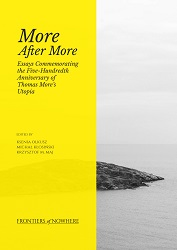
Keywords: utopia;utopianism;dystopia;utopian studies;postcolonial theory;postcolonialism;post-Italian;popular music;autonomy;liberation
More...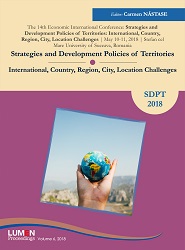
Keywords: Cultural landscape; built patrimony; construction tradition; southern part of Bukovina;
The cultural landscape of the southern part of historic province Bukovina (situated in North-East of Romania) is a resource for a sustainable development of tourism in the area, being considered that the tourist product and service supply combine Bucovina's main assets: nature and culture [1].Named the "Land of Beech", well known for its vast forests, Bukovina was the region where the woodworking craftsmanship has taken shape since ancient times.Here we can talk about a real development of the wood culture (wood was used to build the house, the barn, the stables, the gate and the fence, to make the furniture inside the dwelling, for example the dowry chest, the table, the bed, the dish shelf, the kneading-trough, the barrels, the spoons, the loom, the spinning wheel, the spindle, the towing torch). This wood culture was influenced by historical and geographic factors, it had particularities from one area to another regarding the working techniques, especially due to the influence of the German, Polish and Slovak colonists, who came to Bukovina after its annexation by the Austrians (1774).Recently, the preservation of cultural landscape, as a solution that contributes to a sustainable development of the region, was brought again to the attention of specialists. To have access to all written resources, could be a challenge, if we take into consideration that most of them were produced between 1960-1990, in a limited number, with a limited circulation. The present paper will result of the documentation work of the authors, that have centralized all bibliographic resources that are relevant for the material patrimony of Bukovina.
More...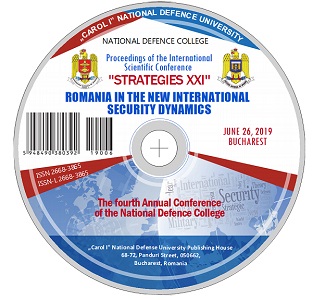
Keywords: regional;international;security.
In the meantime, the new security threats are refering to the regional security and the ones against the common interests, all together of every states viewed like separate entities, into its esamble. Those toward to the need of a regional and a global action plan for the promotion of security interests, though clearly understanding the major implications of regional and global security against national security based on the new types of threats, such as hybrids ones.
More...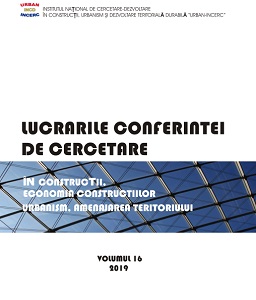
Keywords: urban challenges; smart city implementation; stakeholder's visions
The engine of urban transformation involves different cycles of unitary innovation and engineering that have objectives, resources, deadlines and priorities. The actors most often involved are: local administrations - which set priorities, challenges for competitiveness, sustainability and social inclusion, elaborate and implement urban development policies and make urban planning plans; research institutes and companies in the technological field that can offer technological solutions and facilities for testing and experimenting social innovations. The technological dimension, representing a space with multiple opportunities and within an urban innovation ecosystem, requires innovation environments, communities and stakeholders within the urban value system, who will play various roles. There is an obvious need for cooperation with citizen groups, local government, technology providers and other actors to develop, make prototypes, validate solutions that are truly in the interest of citizens and the city. Particularly important are the public-private partnerships for the development of projects aimed at urban development, for example in the field of social innovation, job creation, environmental problems, transport optimization, and many others. Therefore, the discussion on the development of the city should not be limited to immediate solutions related to infrastructure, social services or prosperity, but should pay greater attention to it’s built heritage, it’s conservation and upgrading.
More...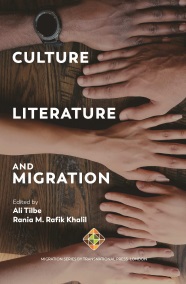
Keywords: migration; islam; migrant female writer; sociology;
To understand how many narratives have been concealed by a dominant narrative which nullifies others, it is important to reopen the archives of European contemporary literature through the critical voice of a migrant female writer, originally from a Muslim country. The literary production of female migrants originally from Muslim countries does not allow for the creation of an objective scientific analysis of the social condition of this subject, however, it allows understanding of the different products of cultural representations of her. In the literary landscape, a novel is a fundamental space in which to draw symbolic boundaries. As Spivak affirms: “the role of literature in the production of cultural representation should not be ignored” (Spivak, 1988, p. 243).
More...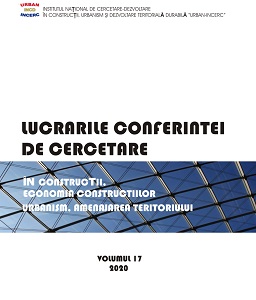
Keywords: nonlinear analysis; pushover; adaptive pushover
Understanding the relationship between seismic movements and the dynamic response of structural systems, was the moments that changed the approach of seismic engineering. The development of the process was first possible by modeling the seismic response in the elastic domain through models with a single degree of freedom and elastic response spectra, then by modeling the elasto-plastic behavior using inelastic spectra. The shift to the automation of calculations, as well as the influence of historical earthquakes, has radically changed the traditional way of designing, in that the research of the behavior of structures throughout the elasto-plastic field, tends to become a current practical application technique for substantiating design solutions: the possibility of performing fast structural calculations, with increased repetitiveness, modeling nonlinear behavior at the section level, on the element level or global level. The opportunity to develop and, in particular, of applying new calculation methods, much more accurate methods of calculation, meant to replace the traditional methods of calculation, which proved to be deficient in many occasions. The main objective of this paper was to show the effectiveness of the conventional pushover analysis method, as well, the way in which the recent developments regarding the evaluation of the seismic performance have led to improve the analysis methods used.
More...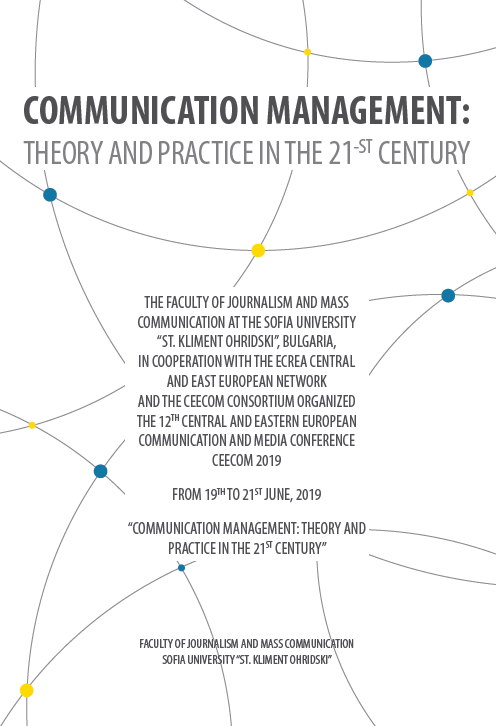
Keywords: female prime minister; media coverage; media framing; mediatization; Romania
Since January 2018, the government of Romania is headed by a woman, Vasilica Viorica Dăncilă, the first female prime minister in the history of the country. Beyond other controversial issues relating to the political situation in Romania, especially those in connectionwith the frequent changes of prime ministers in recent years, media covered the appointment ofMrs. Dăncilă as prime minister with special scrutiny, paying attention to details that were notregarded as such in the case of the prior appointed male prime ministers. Thus, discussions could be encountered in the press, on themes mostly or only related to women, such as: how does this person look, how she dresses, how is her hairdo, what “female tricks” she uses, through what specific female strategies did she manage to have this rising political career or what man she owes her success.
More...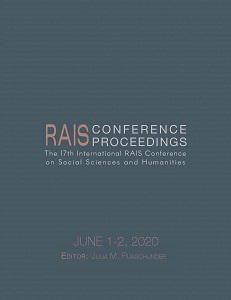
Keywords: strategic subcultures; grand strategy; neoclassical realism;
Scholars have identified strategic culture as an important ideational factor that influences grand strategy decision making. However, they pay less attention to the role of strategic subcultures in the grand strategy formation. This paper departs from structural realism and exams the effects of strategic subcultures in grand strategy formation at the unit level. To investigate the role of strategic subcultures, the author uses the Type II neoclassical realist approach, which focuses on the influence of ideas on foreign policy and grand strategy response to structural imperatives. Thus, strategic subculture is an ideational intervening variable that affects grand strategy behavior. This paper uses China as a case to conduct a preliminary study to support the author’s theoretical argument. Many scholars have emphasized the impact of thousands of years of Chinese civilization and highlighted the pervasive influence of Confucianism over its state behavior. Nevertheless, China’s grand strategy is frequently affected by its strategic subcultures, such as nationalism and ideology. This paper traces evidence of Chinese grand strategy in the post-9/11 era as a case study.
More...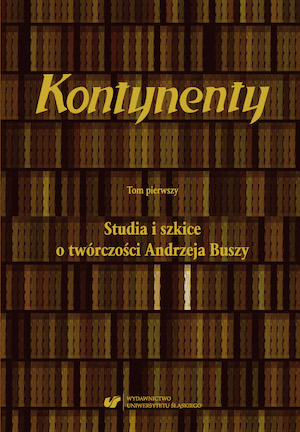
Keywords: elegy; genre pattern; context; archetype; imagery;
The paper discusses Andrzej Busza’s poem Elegia dla Wili dedicated to his dead wife, Wilhelmina. It appeared in the literary magazine “Fraza” in two translations into Polish: one by Beata Tarnowska, the other by Jacek Gutorow. The form, affective issues, as well as the stylistic differences between the two translations are considered. The link between the creative process and emotion, clearly manifested in Busza’s text, not only constitutes the substance of the poem but also determines its mode of expression. This topic, too, receives attention in the analysis.
More...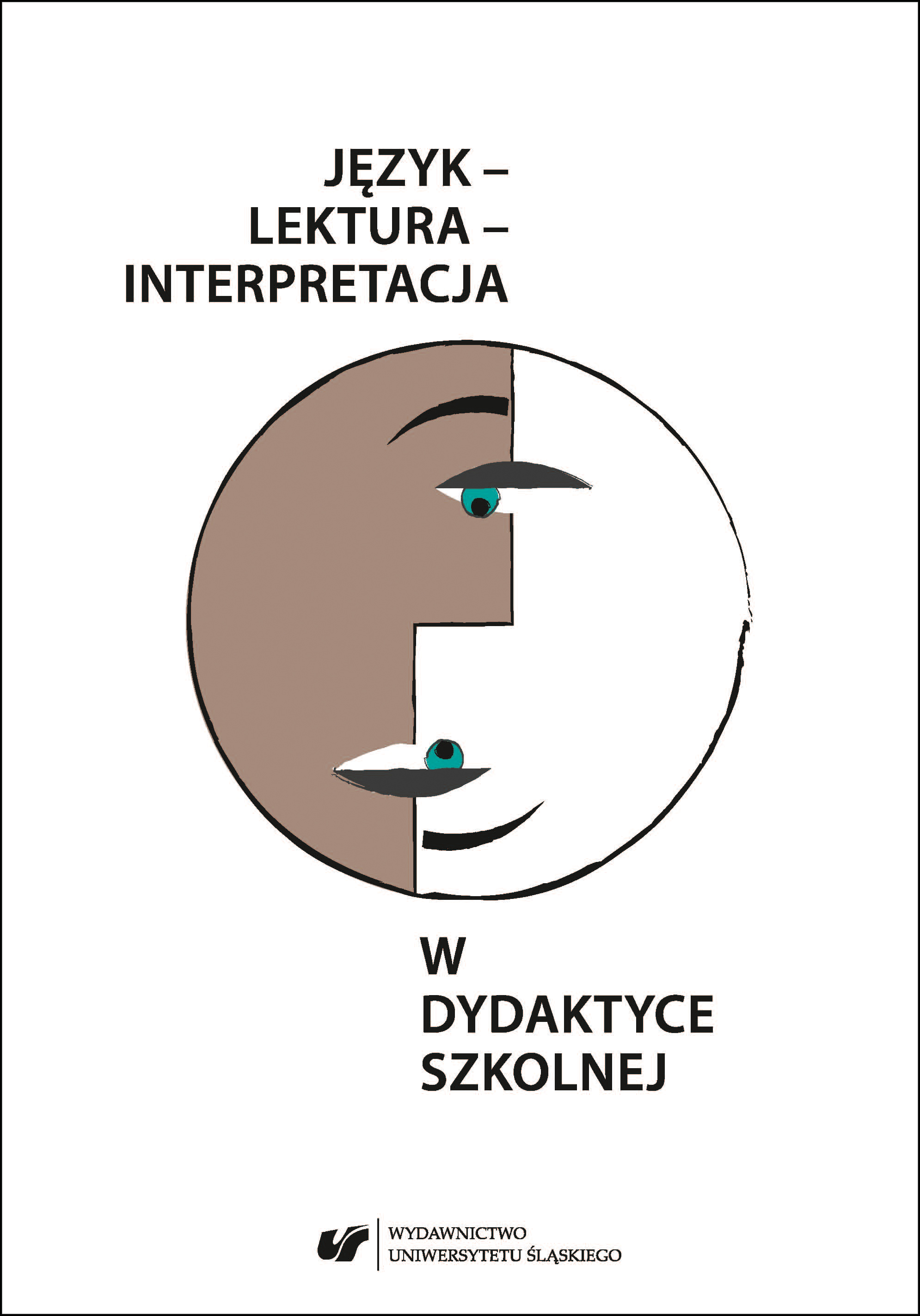
Keywords: photography; Holocaust;education;
The aim of this article is to present the educational possibilities of using photographs from the Holocaust. The choice of medium is due to the fact that photography is a form of communication familiar to the students and their communication practices. The initial point for discussion is the fate of a photo from the liquidation of the ghetto in Warsaw – Pulled out of the bunkers from The Stroop album. Recreating his story, analysing the message itself and using it in culture (critical art, popular culture) are examples of the use and abuse of photographs of suffering Nazi victims. The analysis of the Holocaust photographs in lessons devoted to the literary representations of this subject enables to launch a new cognitive, emotional and aesthetic perspective. The purpose of the proposed educational activities is to develop an attitude of understanding survival against a difficult and ethical challenge of the Holocaust and its representation.
More...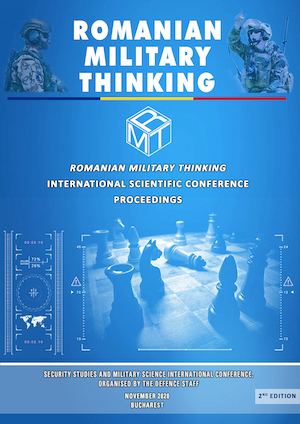
Keywords: information warfare; security; deception; multinational exercises; asymmetrical confrontations;
In research, discussions from public space and materials designed and disseminated by media trusts, the issue of hybrid warfare/hybrid threats is often analysed either as a phenomenon or as a specific factor of an event. However, due to the complexity of the subject, confusion is often made or the concepts are mixed as the subject becomes even more ambiguous. In addition, the excessive use of simple terms such as “information manipulation”, “propaganda”, “misinformation”, “influence”, in the public space, has led to an alteration of their meaning and an ambiguity of the effects that these terms have on the perception of threat. On the other hand, in this context, the role and relevance of security and military intelligence in the management and limitation of hybrid warfare/hybrid threats has been little discussed. Thus, this paper tries to detail in a succinct manner (due to the complexity of the topics), at a theoretical level, the concepts of security intelligence, military intelligence and information warfare.
More...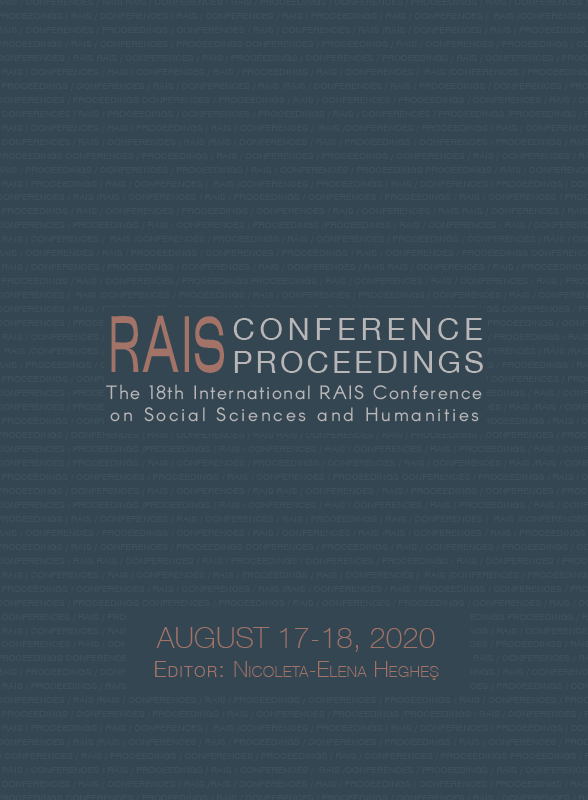
Keywords: property right; public property; public property right;
The Romanian law allows the authorities to intervene and expropriate certain privately owned immovable assets in order to transfer them into the public property, for the performance of local, county or national investment works meant to serve public utility purposes and foster social growth. The forced transfer of certain privately owned immovable assets into the public property is subject to the observance of the expropriation lawfulness terms, the determination of the public utility cause and the establishment of the individuals’ compensation for the expropriated asset, as stipulated in the Constitution of Romania, the Civil Code and other regulations adopted in this respect, as well as in the Protocol 1 of the European Convention on Human Rights.
More...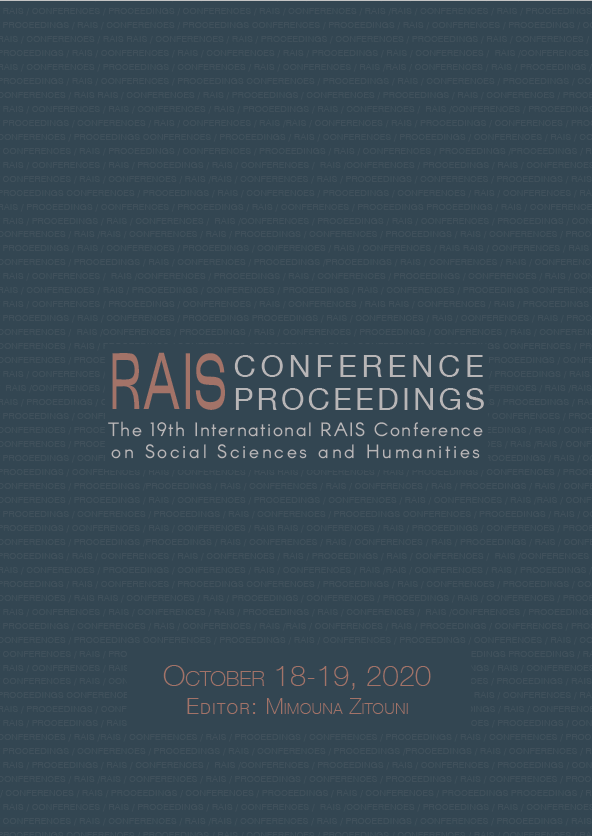
Keywords: principle of non-discrimination; forms of discrimination; disadvantaged category; equal opportunities; contentious administrative;
Any person who considers himself discriminated against may refer to the National Council for Combating Discrimination which will investigate the alleged acts of discrimination and decide on their existence or non-existence. According to its legal consecration, the Council is the state authority in the field of discrimination, under parliamentary control and at the same time it is a guarantor of the observance and application of the principle of non-discrimination, in accordance with the domestic legislation in force and international documents to which Romania is a party. The jurisdictional activity of the Council, finalized with the pronouncement of a decision, can be censored by the administrative contentious court which, re-evaluating the administered evidence, will rule on its legality and validity.
More...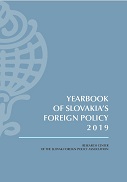
Keywords: Slovakia; NATO; security; defense policy; 2019; EU; foreign policy;
When 2019 started, there were several defense and security issues to be resolved. The EU was preparing for its parliamentary election and Brexit day was still in the pipeline. It had been almost three years since the referendum, so desperation on both sides had turned into a tiresome wait for the United Kingdom to finally leave the EU. There were a couple of related questions, such as what kind of relationship would the EU and UK agree in relation to Common Foreign and Security Policy (CFSP). In addition, with the United Kingdom leaving the EU, the member states felt the urge to address third party participation in Permanent Structure Cooperation (PESCO). In NATO the leadership and members were starting to get along with the U.S. administration and were able to distinguish words from actions. After reassurance from some U.S. government representatives, although not its head, NATO continued going forward, expanding rapid deployment, securing the Eastern and Southern Flanks by military and non-military means and keeping the door open for possible accessions. The Eastern Flank of Europe, particularly the ongoing frozen conflict in Ukraine led Slovakia to follow NATO’s policy of improving readiness through military exercises and by building security capacities, such as the NATO Force Integration Unit.
More...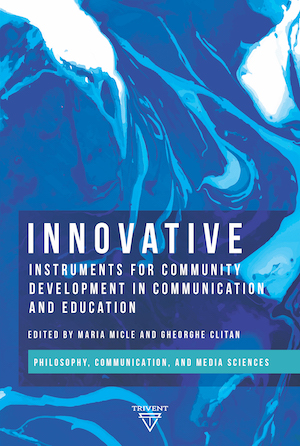
Keywords: Participation; audience; consultation; co-decision; co-production; governance; ECoC.
In the context of the growing interest of the European Capital of Culture programme in participation, meant to offer a sustainable legacy of the title, understood as community building, the paper discusses participatory practices applied by Timisoara 2021, starting from a theoretical typology of participation.
More...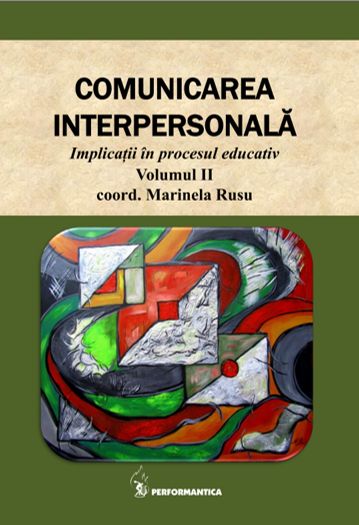
Keywords: communication; message; conflict;
Communication represents a process of interaction between people, groups, as a relation mediated through word, image, gesture, symbol or sign. Through it, individuals share their knowledge, experiences, interests, attitudes, feelings, opinions, ideas. Viewed as a process, communication consists in transmission and exchange of information (messages) between individuals. Communication means to tell those around you who you are, what you want, why you want a certain thing, and what are the means you will use to achieve your goals. Communication is defined as “a process through which a transmitter sends information to the receiver through a channel, in order to produce certain effects on the receiver.” In the present paper we analyze the most important types of communication: intrapersonal communication, interpersonal communication, small group communication, public communication / in organizations and mass communication. The success of communication in organizations depends on its manager, who must be a true manager of his organization's communication system, and this requires a continuous effort on his part in accumulating knowledge and training skills in organizational and interpersonal communication
More...